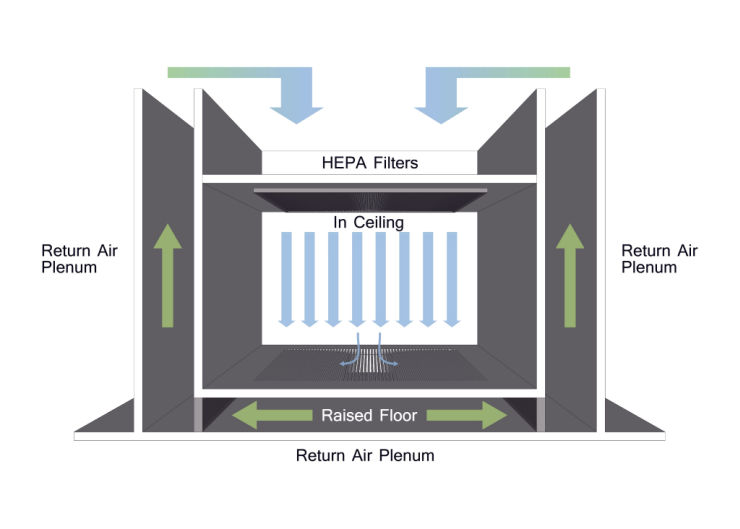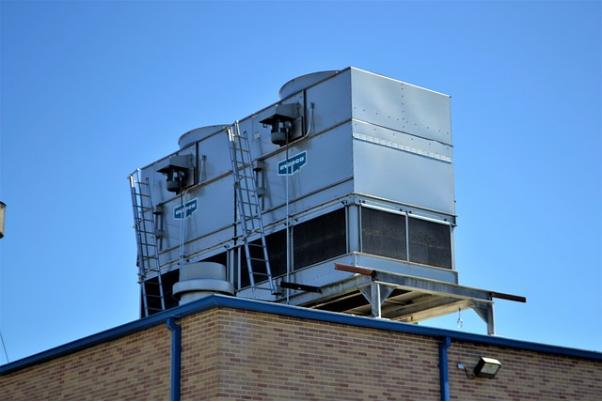Plenum ratings are the different levels that designate the suitability of different plenum cables that allow for fire resistance capabilities of the cables.
You may want to do an in-wall installation for residential or commercial buildings for a WiFi network, distributed antenna system, or a signal booster for your building but have no idea how to do it or the cables to use, which may result in more harm than good. It’s, therefore, critical to understand the basics of plenum-related cables if you’re an expert installer or a do-it-yourself (DIY) homeowner.

The safety of your commercial and residential buildings depends on whether or not you use the right cable. Luckily, this guide discusses the importance of a plenum-rated cable and why you should use them over non-plenum cables.
Understanding plenum
During construction, constructors allow open spaces for electric cables and air circulation. Such open-air spaces are known as plenum spaces. You’ll likely find a plenum space below raised floors or drop ceilings.

Air flows freely in the air ducts connecting the supply vents and the ventilating systems allowing proper air conditioning. However, fire and harmful smoke can easily spread through these plenum spaces from one building section to the other.
It’s, therefore, best to use plenum-rated cables in plenum areas because they’re coated with flame-retardant jackets, unlike non-plenum-rated cables, which don’t restrict flame propagation.
What are plenum cables?
A plenum cable is an electric cable an electrician lays on the plenum spaces of a building. The National Fire Protection Association regulates the materials used to construct these cables. Manufacturers design these materials for plenum space suitability ensuring they have fire-resistant properties.

These cables can either be plenum-rated cables or non-plenum cables. However, the term plenum and non-plenum don’t refer to the various types of cables but to the out layer or coatings of the cables.
Plenum and non-plenum rates cables
A plenum-rated cable or a Communications Multipurpose Plenum (CMP) is fluorinated ethylene polymer or low-smoke polyvinyl chloride (PVC) coatings that give it low flame characteristics, helping to prevent fires and the release of toxic fumes.
It’s more costly than a riser cable and a non-plenum cable and has the highest flaming rating. Safety building codes dictate that installation experts use plenum-rated cables in all plenum spaces.
However, you can use plenum and non-plenum cables in non-plenum areas. Still, you can’t use a non-plenum cable, such as the Communication Multipurpose Riser (CMR), riser cable, or Communication Muiltipurpose (CM) cable, in a plenum space. They’ll allow the circulation of harmful fumes throughout the building. They’re less expensive and don’t resist fire like the plenum cables.

Mostly, non-plenum cables are used when there are no code requirements and restrictions on the type of cable to use or when working in non-plenum spaces. Still, you must consider purchasing plenum-rated cable even when working in non-plenum spaces because it may be one of the requirements you need to meet before getting insurance coverage from a reputable company.
Understanding cable ratings
There are about 16 cable ratings used to determine the fire-resistant properties of cables. You should note that you can use a cable with a higher rating to replace one with a lower cable rating, but you can’t replace a higher-rated cable with one with a lower rating. This principle applies across all cables, including plenum, non-plenum, and riser cables.
Identifying Plenum-rated cables
All information on the cable rating is usually printed on the cable’s jacket. It indicates the manufacturer, the rating, the reference number, the verifier, and other relevant information.

A rated plenum cable has an approval number and a UL trademark label. The Underwriter’s Laboratories (UL) is the de facto body responsible for cable certification.
You can check the number validity on their website to ensure the cables meet your desired specifications. Some of the plenum cables that are listed with the UL include the following:
- Wilson 400 plenum cable
- Commscope Heliax AL4RPV
- Ventev TWS-400-P
However, you may come across a cable type not listed in the UL but meets the plenum-rated standard. You can use such a cable if the fire and building safety codes allow it. All you need to do is prove the cable meets the required UL standards. An example os such a cable is:
- RSRF RS400-PL plenum cable
Why plenum-rated cable?
As mentioned, a plenum cable can be a plenum-rated or a non-plenum-rated cable. Mostly, they’re used more because of their advantageous properties. However, you don’t need it if you’re using a plenum conduit.

The benefits you’ll derive from using these cables over others include the following:
- Protects against fire hazards
- Refrains the number of toxic fumes released
- Easy to install
- Better cabling option
- Self-extinguish
When to use non-plenum cables
The good thing about a non-plenum cable is that you can use it in just about any open space except in plenum areas.
You can use these cables or PVC pipes run cables through open ceilings and walls in your building. However, you should use a riser cable if you want to run a cable through vertical shafts and risers.

You can use a non-plenum cable if your building has an HVAC system with return air ducts as long as there’s no air circulation in the drop ceiling and leakages because a leaky duct can transform an open space into a plenum.
Uses of plenum cables
Depending on your needs and requirements, you can use plenum cables in various places. The most common areas where you can use the include the following:
●IT centers: The IT department needs an efficient networking system. They, therefore, use plenum cables that allow for intensive cooling for servers and routers.

●New Construction: When constructing a new building, it’s best to consider leaving plenum spaces you’ll use to run cables for safety purposes.
Conclusion
Your safety should always come first, regardless of the amount you’ll spend in the process. Fire breakouts are common misfortunes that occur in residential and large office buildings. However, you can reduce the spread by installing the right cables. It may seem expensive, but it’ll save you a lot of money in the long run.
